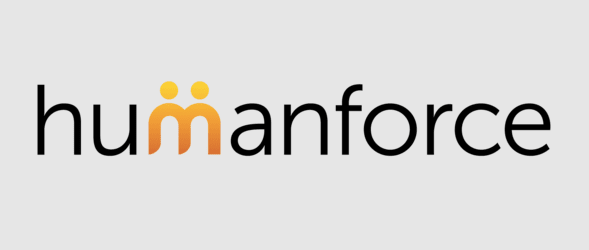First Name
Last Name
Work Email
Create Password
Job Title
Phone
Job Function Change management Coaching/mentoring Corporate social responsibility/sustainability Diversity and inclusion Employer branding Employee communications Employee engagement Employee relations/trade unions Employee well-being Employment Law Freelancer Health and safety HR metrics HR policy development HR systems and technology International HR International reward/expatriate management Leadership management development Leading and managing the HR function Learning and development strategy Occupational psychology Organisation design Organisation development Pensions Performance management Public policy issues Recruitment and selection Reward management Employee Benefits + Incentives Shared services (including HR outsourcing) Talent management Technology based training including e-learning Training delivery Training design Workforce training None of the above Please select an option
Company
Industry Aerospace and Defence Agriculture/ Farming/ Fishing/ Forestry Armed Forces Automotive Banking/ Finance/ Insurance Charities / Not-for-profit/ Voluntary Chemicals Construction Consulting & Other Business Services Development Aid Education Electronics Emergency Services Energy & Utilities Engineering Entertainment and Recreation Enivronmental Services Facilities Management FMCG Food/ Beverages/ Tobacco Health & Social Care Hospitality Local & Regional Government Manufacturing Media Mining and Minerals Other Pharmaceuticals Procurement Outsourcing Services Property Retail & Wholesale Technology / IT/ Telecommunications Transportation & Logistics UN Agency None of the above Please select an option
Total Number of Employees within Organisation 1-10 11-50 51-100 101-250 251-500 501-1,000 1,001-2,500 2,501-5,000 5,000-20,000 20,000+ N/A Please select an option
Company Turnover Under 10m 10 million plus 50 million plus 100 million plus N/A Please select an option
Address
City
Postcode
Country United Kingdom United States Afghanistan Aland Islands Albania Algeria American Samoa Andorra Angola Anguilla Antarctica Antigua and Barbuda Argentina Armenia Aruba Australia Austria Azerbaijan Bahamas Bahrain Bangladesh Barbados Belarus Belgium Belize Benin Bermuda Bhutan Bolivia Bosnia and Herzegovina Botswana Bouvet Island Brazil British Indian Ocean Territory Brunei Darussalam Bulgaria Burkina Faso Burundi Cambodia Cameroon Canada Canary Islands Channel Islands Cape Verde Cayman Islands Central African Republic Chad Chile China Christmas Island Cocos (Keeling) Islands Colombia Comoros Congo Congo, The Democratic Republic Cook Islands Costa Rica Cote D'Ivoire Croatia Cuba Curaçao Cyprus Czech Republic Denmark Djibouti Dominica Dominican Republic Ecuador Egypt El Salvador Equatorial Guinea Eritrea Estonia Ethiopia Falkland Islands (Malvinas) Faroe Islands Fiji Finland France French Guiana French Polynesia French Southern Territories Gabon Gambia Georgia Germany Ghana Gibraltar Greece Greenland Grenada Guadeloupe Guam Guatemala Guernsey Guinea Guinea-Bissau Guyana Haiti Heard and McDonald Islands Holy See (Vatican City State) Honduras Hong Kong SAR, China Hungary Iceland India Indonesia Iran (Islamic Republic Of) Iraq Ireland Isle of Man Israel Italy Jamaica Japan Jersey Jordan Kazakhstan Kenya Kiribati Korea, Democratic People's Republic of Korea, Republic of Kosovo Kuwait Kyrgyzstan Lao People's Democratic Rep Latvia Lebanon Lesotho Liberia Libya Liechtenstein Lithuania Luxembourg Macau North Macedonia Madagascar Malawi Malaysia Maldives Mali Malta Marshall Islands Martinique Mauritania Mauritius Mayotte Mexico Micronesia, Federated States of Moldova, Republic of Monaco Mongolia Montenegro Montserrat Morocco Mozambique Myanmar Namibia Nauru Nepal Netherlands Netherlands Antilles New Caledonia New Zealand Nicaragua Niger Nigeria Niue Norfolk Island Northern Mariana Islands Norway Oman Pakistan Palau Palestinian Territory Panama Papua New Guinea Paraguay Peru Philippines Pitcairn Islands Poland Portugal Puerto Rico Qatar Reunion Romania Russian Federation Rwanda Saint Barthélemy Saint Helena Saint Kitts and Nevis Saint Lucia Sint Maarten Saint Pierre and Miquelon Saint Vincent and the Grenadines Samoa San Marino Sao Tome and Principe Saudi Arabia Senegal Serbia Seychelles Sierra Leone Singapore Slovakia Slovenia Solomon Islands Somalia South Africa South Georgia and the Southern Sandwich Islands Spain Sri Lanka Sudan Suriname Svalbard and Jan Mayen Swaziland Sweden Switzerland Syrian Arab Republic Taiwan, China Tajikistan Tanzania, United Republic of Thailand East Timor Togo Tokelau Islands Tonga Trinidad and Tobago Tunisia Türkiye Turkmenistan Turks and Caicos Islands Tuvalu Uganda Ukraine United Arab Emirates United States Minor Outlying Islands Uruguay Uzbekistan Vanuatu Venezuela Vietnam Virgin Islands (British) United States Virgin Islands Wallis and Futuna Islands Western Sahara Yemen Yugoslavia Zaire Zambia Zimbabwe Please select an option


